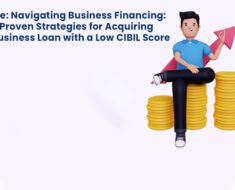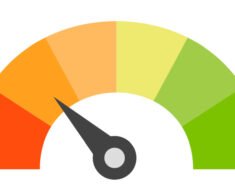Within the domain of individual finance, grasping the complexities linked with interest rates plays a pivotal role in shaping well-informed choices. The personal loan stands out as a prime example of a financial instrument inherently tied to interest rates. As a recipient of such loans, acquiring a profound understanding of the ebb and flow of personal loan interest rates holds the potential to exert a substantial influence on your fiscal health. This article takes you on an explorative voyage, delving into the intricacies of personal loan interest rates, ultimately furnishing you with the wisdom needed to foster prudent financial decisions.
Unveiling the Essence of Personal Loan Interest Rates:
Fundamentally, a personal loan encapsulates an unsecured avenue of borrowing, wherein a financial establishment extends to you a predetermined amount. This sum is customarily determined by factors such as your creditworthiness, income scale, and capacity for repayment. The process of reimbursement unfolds through consistent installments, encompassing not only the initial borrowed principal but also the accompanying interest levies.

The personal loan interest rate is a critical component of the repayment equation. It represents the cost of borrowing the funds and is expressed as a percentage. Your loan’s interest rate essentially determines the additional amount you need to pay on top of the principal borrowed.
Read more.. The Cerebrum Study of Money: What Lead Tendencies Mean for Financial Route
Read more.. Embracing Variety and Consideration: Advantages and Best Practices for Organizations

Read more.. The Job of Development and Imagination in Business Development
Read more.. Researching the Post-Pandemic Economy: Methodology for Cash-related Recuperation
Factors Influencing Personal Loan Interest Rates:
Several factors interplay in determining the interest rate for a personal loan. As a savvy borrower, being aware of these factors can empower you to secure a better deal:
- Credit Evaluation: The evaluation of your credit history and credit score exerts substantial influence over the rate of interest presented to you. A heightened credit score frequently correlates with a diminished interest rate, as it mirrors your fiscal reliability and adeptness in handling financial obligations prudently
- .Income and Employment Stability: Lenders assess your income level and employment history to gauge your repayment capacity. A stable income and job history may lead to a lower interest rate.
- Loan Amount and Tenure: The loan amount and repayment tenure influence the risk perception for lenders. Elevated sums of loans or extended repayment durations could potentially result in marginally escalated interest rates owing to heightened risk factors.
- Economic Landscape: The existing economic landscape, inclusive of inflation percentages and the governing central bank’s fiscal strategy, has the potential to reverberate across comprehensive interest rates. This, consequently, might wield an effect on the interest rates affiliated with personal loans.
- Loyalty Bonds with Lenders: Patrons maintaining longstanding associations with a financial institution or bank could potentially gain access to interest rates that are inclined in their favor, serving as a gesture of recognition for their enduring allegiance.
- Loan Type and Purpose: Different types of personal loans (such as debt consolidation, medical expenses, or travel) might have varying interest rates. Similarly, the purpose of the loan can influence the rate.
Navigating Interest Rate Structures:
Segmenting personal loan interest rates unveils a dual classification: fixed and variable.
A Fixed Interest Rate: Under this arrangement, the interest attached to your loan remains unwavering throughout its duration. This steadiness affords predictability in monthly dues, simplifying budgeting. Nonetheless, it’s worth noting that the initial fixed rate could potentially be marginally higher than its variable counterpart.
A Variable Interest Rate: This type of interest rate exhibits fluctuations corresponding to market dynamics. Although it might commence at a lower point compared to the fixed rate, there’s an inherent risk of escalation, potentially resulting in heightened payments over the loan’s course.
Cracking the Code of Annual Percentage Rate (APR):
In the process of evaluating personal loan propositions, directing your attention towards the Annual Percentage Rate (APR) emerges as imperative. The APR encapsulates not solely the interest rate but also any supplementary charges and fees associated with the loan, providing a comprehensive understanding of the complete borrowing cost. This provides a more comprehensive view of the total cost of borrowing and aids in accurate comparisons between different loan options.
Conclusion: Empowering Your Financial Choices
Equipped with this understanding, you possess the confidence to engage lenders with assurance, advocate for improved conditions, and opt for a loan that harmonizes with your fiscal aspirations. It’s crucial to acknowledge that the personal loan interest rate extends beyond numerical value; it mirrors your financial expedition and serves as a pivotal influencer of your fiscal well-being. Hence, as you set forth on your borrowing expedition, do so fortified by this insight, ensuring your choices are poised to nurture your financial prospects optimally.






